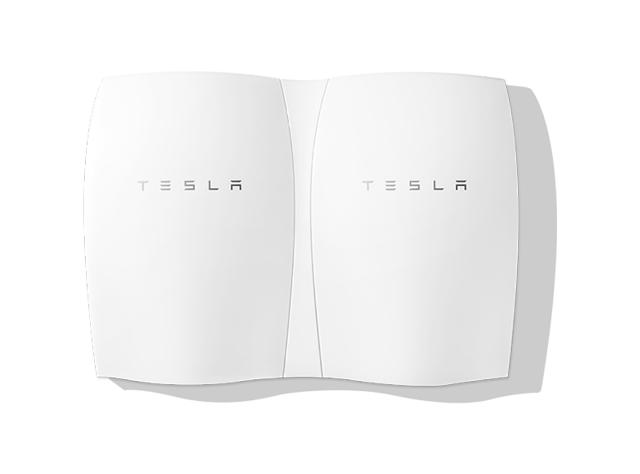will have to you purchase A Tesla Battery?
For house owners, it may simplest be a topic of when—not if.
may 26, 2015
Ten days after launching its new Powerwall and Powerpack batteries, Tesla introduced that it used to be sold out through 2016. at the related time, the criticism started: have been the batteries only a “toy for rich green people” that “didn’t work that smartly with solar“?
So does it make feel to buy this battery? the answer is determined by who you might be and the place you are living. for firms that pay steep demand prices (when electrical energy prices more every now and then of excessive demand) and have get admission to to profitable incentives, such because the Self-technology Incentive program in California, the batteries are like “free money,” says Garrett Fitzgerald, an analyst from the Rocky Mountain Institute. Demand costs can make up 1/2 of a regular business electric invoice. by storing energy generated when electrical energy is reasonable, businesses can cut back them.

For homeowners with solar power, the calculation is moderately more difficult. “Tesla sees monumental possible for the Powerwall in markets like Hawaii, Germany, and Australia, where the price of electricity is significantly costlier than the cost a utility can pay a house owner for excess sunlight production,” says Alexis Georgeson from Tesla. “In these markets these days, the Powerwall can provide compelling economics.”
other locations at the moment use a machine called net metering—when clients generate solar power and it flows to the grid, utilities pay the identical value as they charge for energy flowing out. that means having a battery wouldn’t keep a household any cash.
“In markets like California, where net metering gives a pricing parity between retail electrical energy and energy bought back to the utility, the Powerwall’s primary value to the buyer is in providing backup and enabling a client’s sun panels to continue running when the grid goes down,” says Georgeson.

For some people, that may well be price paying a bit of further. “It depends upon how a lot you value your potential to use your solar energy device all through an outage,” says Fitzgerald. “all the way through typhoon Sandy, none of these methods have been in a position to disconnect from the grid, so their sun used to be basically unnecessary all through the three weeks when the grid used to be down.”
As the price of solar retains plummeting, the extra price of a battery for backup would possibly appear quite small. “If I may pay an extra 20%-25% and we are able to guarantee that the lights never go off—and i’ve received little children at dwelling, I’ve received milk in the fridge—that in truth already sounds pretty attractive to me,” says Jamie Mandel, major in RMI’s electrical energy follow. “solar’s already 20% more cost-effective than it used to be a 12 months and a half of in the past. i can go back to the fee of a year or two ago [with the added cost of the battery], however now I’ve got this extra advantage of resiliency.”
opposite to some reports, the projects supporter’s say the batteries could easily supply normal power desires for a house if the grid went down. “the ten kWh Powerwall gives sufficient power to continue running essentially the most frequently needed circuits chosen by using the client, including the refrigerator, lighting, pc, alarm system and electrical shops, and two Powerwalls installed collectively might give a boost to the vast majority of family loads, including heating and cooling,” says Jonathan Bass, a spokesman for SolarCity, which deals Tesla’s batteries in its leases. “When the battery is depleted, it may be recharged through solar power despite the fact that the outage continues for more than one days.”
firms, too, might use the commercial-size batteries to forestall outages. “in case your lights go out as a industry, i believe the backup power is way more straightforward to monetize,” says Mandel.
For others who aren’t as worried about backup power, a battery-plus-sunlight system might turn into as cheap as paying a regular electric invoice inside a few years. In a record in April, Rocky Mountain Institute discovered that a sun and battery device could be more cost-effective than the grid in some places—like Westchester County in ny, and l. a.—in a few decade. With Tesla’s new battery, they say that would occur even faster.
The battery-and-sun device could additionally quickly develop into more cost-effective than the grid if utilities begin to pay clients for the services and products the batteries may provide—like sending energy back into the grid when conventional energy plants are overwhelmed all over a warmth wave, or helping utilities steer clear of investing in dear new primary infrastructure. presently, the U.S. is projected to spend $1 to $2 trillion over the subsequent 15 years on new power infrastructure, however power storage in houses may lend a hand offset a big chunk of that bill.
“These batteries are absolutely low-cost sufficient nowadays to provide a whole suite of grid values,” says Mandel. “the issue is there is an absence of markets, or instruments, or programs so that they can take part.”
in an effort to probably change soon, though utilities and regulators should work out how the redecorate of the grid will work. “there may be an entire set of problems batteries can solve, and then there are quite a few open questions around which trade edition is the best,” Mandel says. “Our personal view is that putting batteries at the customer website goes to be highest both for patrons and the grid.”
[All images: via Tesla]
(149)













